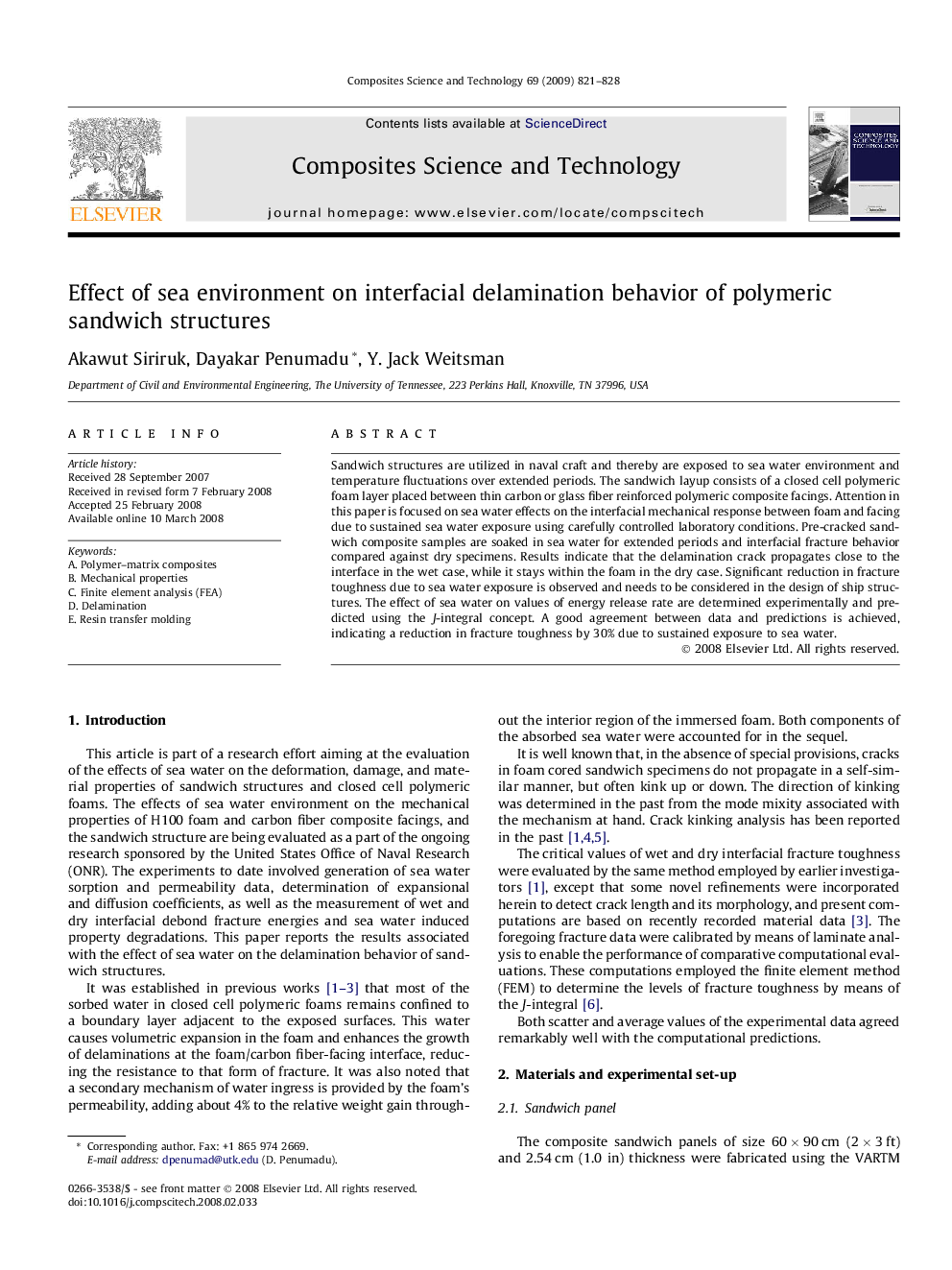| Article ID | Journal | Published Year | Pages | File Type |
|---|---|---|---|---|
| 821454 | Composites Science and Technology | 2009 | 8 Pages |
Sandwich structures are utilized in naval craft and thereby are exposed to sea water environment and temperature fluctuations over extended periods. The sandwich layup consists of a closed cell polymeric foam layer placed between thin carbon or glass fiber reinforced polymeric composite facings. Attention in this paper is focused on sea water effects on the interfacial mechanical response between foam and facing due to sustained sea water exposure using carefully controlled laboratory conditions. Pre-cracked sandwich composite samples are soaked in sea water for extended periods and interfacial fracture behavior compared against dry specimens. Results indicate that the delamination crack propagates close to the interface in the wet case, while it stays within the foam in the dry case. Significant reduction in fracture toughness due to sea water exposure is observed and needs to be considered in the design of ship structures. The effect of sea water on values of energy release rate are determined experimentally and predicted using the J-integral concept. A good agreement between data and predictions is achieved, indicating a reduction in fracture toughness by 30% due to sustained exposure to sea water.
